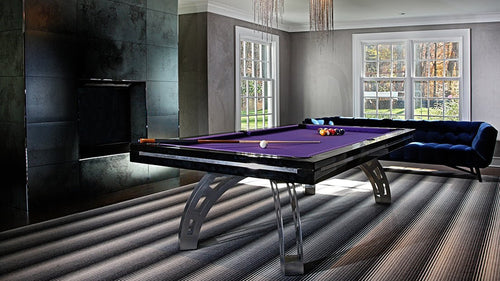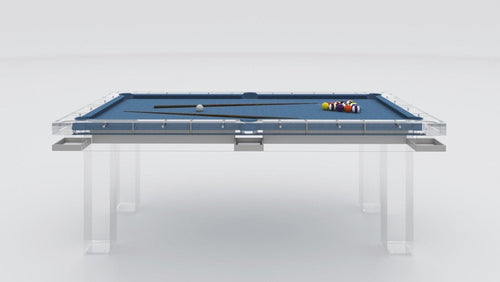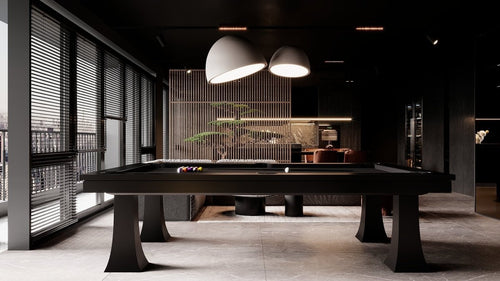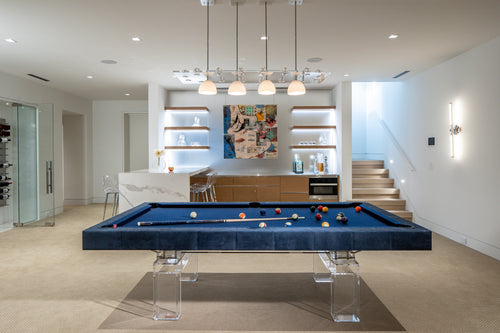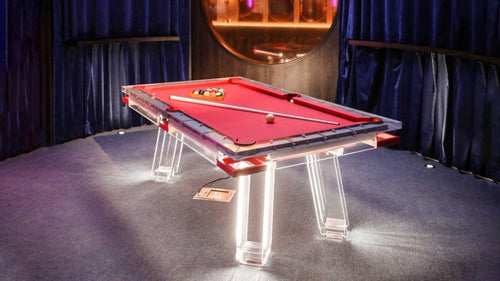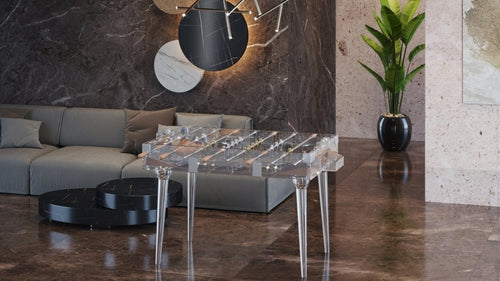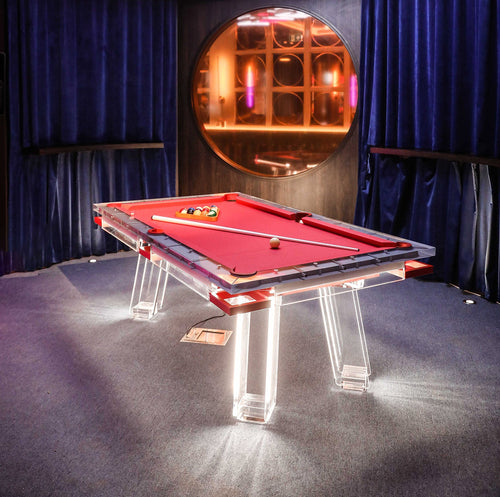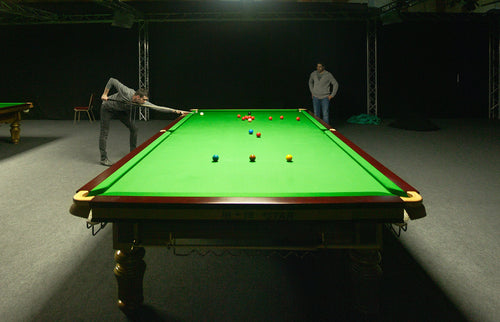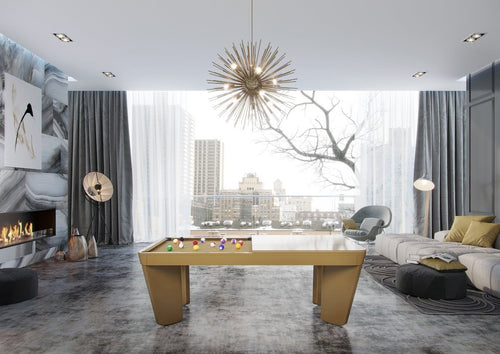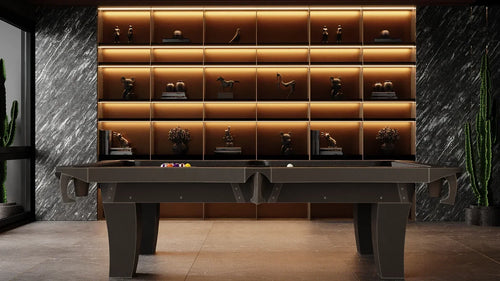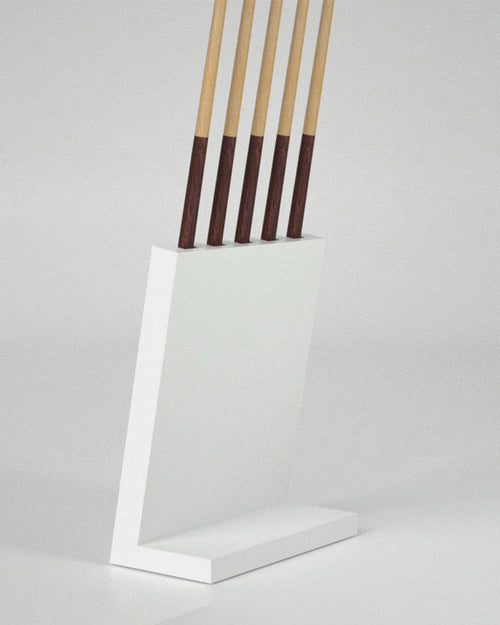Enjoy our modern designs
Lucite/PMMA delivers that floating, crystal look—but it’s softer than glass. The fix isn’t magic coatings; it’s smart handling, gentle cleaning and preventive finishes.
Acrylic (Lucite / PMMA) gives pool tables and furniture their iconic floating look: crystal-clear, sharp-edged, and light-catching. But with that brilliance comes vulnerability. Even optical-grade acrylic is softer than glass, which makes it prone to micro-scratches—fine scuffs that dull clarity over time. Protection is mostly about handling, cleaning, and preventive finishes.
Why Acrylic Scratches Easily
- Material hardness: Acrylic ≈ Mohs 3 vs glass ≈ 6. Everyday grit can mark it.
- Static attraction: Builds charge and pulls dust onto the surface—dust that scratches when wiped.
- High-gloss finish: Mirror-polish highlights even faint swirls.
Prevention: First Line of Defense
- Protective pads: Felt/rubber/silicone feet where acrylic meets floor or frames to keep grit from grinding.
- Coasters & mats: Use coasters; park racks/chalk on microfiber mats, not bare acrylic.
- Dust covers: Soft cover when idle to block airborne grit and incidental contact.
- Anti-static treatments: Acrylic-safe anti-static sprays/cleaners reduce dust cling.
Cleaning Without Damage
- Never dry wipe: Dust + friction = scratches. Lightly damp microfiber only.
- Approved cleaners: Acrylic-safe (Novus, Brillianize) or mild soap/water. Avoid ammonia/alcohol—they haze/weaken PMMA.
- One-direction passes: Straight lines with a clean section each pass; avoid circular swirls.
Keep 3–4 labeled microfibers: “wash,” “rinse,” “dry,” “polish.” If one touches the floor, retire it immediately.
Finishes and Coatings
- Factory hard-coats: Specify hard-coated PMMA (siloxane/UV-cured) for legs/panels to boost scratch resistance.
- Aftermarket sealants: Nano-ceramic coatings add slickness and mar resistance. They don’t make acrylic scratch-proof but reduce micro-marring.
Restoration of Micro-Scratches
- Scratch kits: Progressive abrasives (e.g., Novus #3 → #2 → #1) to level and refinish light scuffs.
- Pro polishing: Machine polish with fine compounds for larger areas or deeper marks.
- Heat polishing: Controlled flame/heat can re-flow the skin for optical clarity—leave to professionals.
Always test on a hidden edge. Over-polishing can round crisp corners or create lensing.
Conclusion
Protecting acrylic is prevention first, gentle maintenance always, and restoration when needed. With pads, anti-static care, microfiber cleaning and optional coatings, acrylic pool tables and game-room pieces keep their jewel-like clarity for decades.



